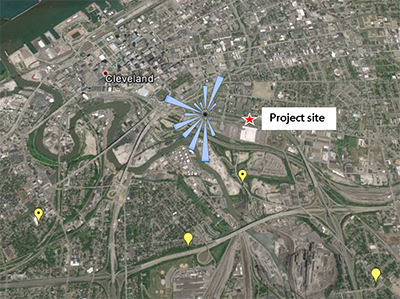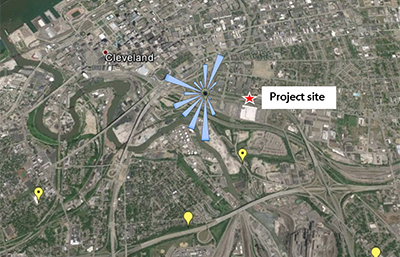Study Helps Estimate Background PM Concentrations Near Major Roads
Clients
National Cooperative Highway Research Program (NCHRP)
How can you determine whether pollution levels resulting from a transportation project are unacceptably high? EPA requires transportation planners to answer this question for certain projects involving substantial diesel traffic by adding particulate matter (PM) concentrations originating from the project to regional background concentrations that can be difficult to estimate.
<br>
This study gives planners step-by-step guidance for estimating PM background concentrations when completing near-road PM hot-spot analyses. The study findings, prepared by Sonoma Technology and The Louis Berger Group, lead planners through four steps:
<ol>
<li>Determine and select representative PM monitoring site(s).</li>
<li>Acquire ambient PM concentration data or modeled PM predictions for the representative site(s).</li>
<li>Remove data impacted by EPA-approved “exceptional events,” such as wildfires or dust storms.</li>
<li>Estimate daily and/or annual PM background concentrations, following EPA requirements.</li>
</ol>
The work discusses EPA guidance, provides a variety of methods and tools to complete the required analysis, and offers case studies illustrating analysis techniques. It helps reduce project evaluation time when completing EPA-described tasks and requirements, and provides helpful insights into the handling of air quality data influenced by exceptional events.
<br>
This study gives planners step-by-step guidance for estimating PM background concentrations when completing near-road PM hot-spot analyses. The study findings, prepared by Sonoma Technology and The Louis Berger Group, lead planners through four steps:
<ol>
<li>Determine and select representative PM monitoring site(s).</li>
<li>Acquire ambient PM concentration data or modeled PM predictions for the representative site(s).</li>
<li>Remove data impacted by EPA-approved “exceptional events,” such as wildfires or dust storms.</li>
<li>Estimate daily and/or annual PM background concentrations, following EPA requirements.</li>
</ol>
The work discusses EPA guidance, provides a variety of methods and tools to complete the required analysis, and offers case studies illustrating analysis techniques. It helps reduce project evaluation time when completing EPA-described tasks and requirements, and provides helpful insights into the handling of air quality data influenced by exceptional events.
Air Quality
Emissions
Exposure
Meteorology
Policy and Planning
Public Outreach
Transportation


Douglas S. Eisinger

Douglas
S.
Eisinger
Senior Vice President / Chief Scientist, Transportation Policy & Planning
Doug@sonomatech.com
/sites/default/files/2023-02/DSEres.pdf
